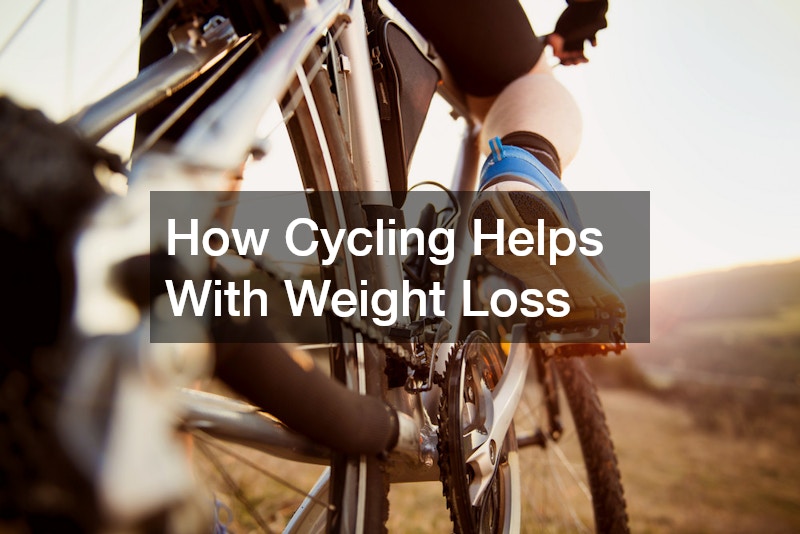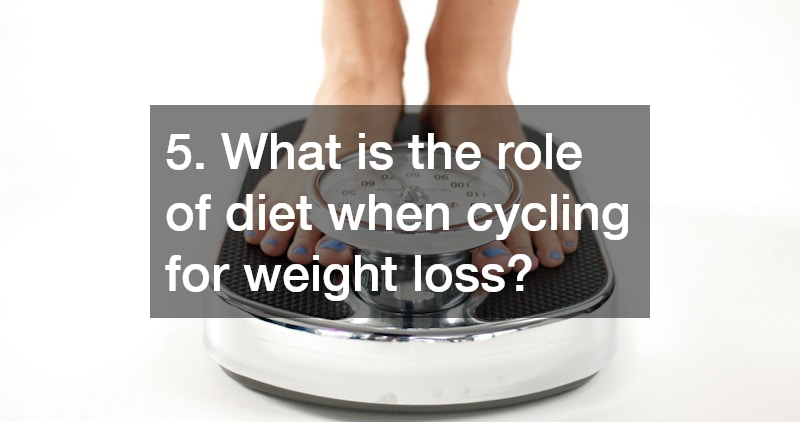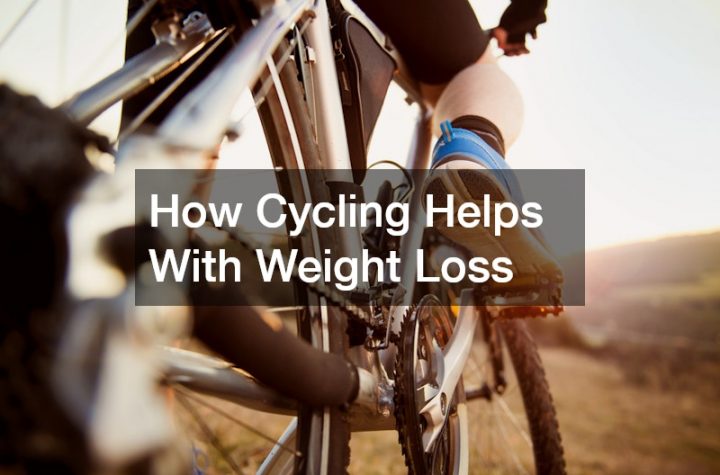

Incorporating cycling into your workout routine can be a potent tool for weight loss. In this article, we will explore how cycling aids in shedding those extra pounds and answer some of the most frequently asked questions about its effectiveness.
1. How does cycling burn calories?
The science behind calorie burning in cycling
Cycling is an effective cardiovascular activity that elevates the heart rate, thereby increasing calorie burn. The rate of calorie burning during cycling depends on factors such as intensity, duration, and the individual’s body weight.
For example, a 155-pound person can burn approximately 260 calories in a 30-minute cycling session at a moderate pace. High-intensity cycling can significantly boost calorie expenditure, making it a powerful tool for weight loss.
Moreover, cycling engages multiple muscle groups, leading to a higher consumption of calories even after the activity concludes. This effect helps cyclists burn calories more efficiently compared to some other exercise forms.
Comparing cycling with other forms of exercise
When comparing cycling to running, both are excellent for burning calories, but cycling can be easier on the joints. This allows for longer sessions, potentially leading to greater overall calorie burn.
Swimming provides a full-body workout similar to cycling, but it can be less accessible for those without pool access. In terms of calories burned in a shorter period, cycling often comes out ahead, especially with high-intensity interval sessions.
Fitness enthusiasts might choose cycling over activities like yoga or weightlifting for weight loss due to its higher cardiovascular intensity. It offers a comprehensive workout that maximizes caloric expenditure.
2. What is the best cycling routine for weight loss?
Creating an effective cycling schedule
For optimal weight loss, it is essential to balance cycling intensity with adequate rest days. An effective schedule might include three days of cycling with varying intensity, interspersed with rest or cross-training days.
Adjusting cycling routines as fitness levels improve can prevent plateaus and keep progress on track. Moreover, setting SMART goals (Specific, Measurable, Achievable, Relevant, Time-bound) can help maintain motivation.
Incorporating different terrains, such as flat roads and hilly trails, can diversify workouts and enhance weight loss results. The variation in difficulty stimulates different muscle groups and elevates calorie burn.
Interval training vs. steady-state cycling
Interval training involves alternating between short bursts of high intensity and lower-intensity recovery periods, which can lead to significant improvements in fitness and weight loss. This approach can increase post-exercise oxygen consumption, meaning your body continues to burn calories even after the workout ends.
On the other hand, steady-state cycling involves maintaining a constant pace for an extended period. While it might burn fewer calories in a short time frame, it increases endurance and helps the body become more efficient at fat utilization.
Choosing between interval and steady-state cycling depends on personal goals and fitness levels. Implementing a mix of both could offer the most effective regime for shedding pounds.
3. How does cycling affect metabolism?
Understanding the metabolic boost from cycling
Cycling regularly can elevate your resting metabolic rate (RMR), which means you burn more calories at rest. The increase in muscle mass from cycling contributes to this metabolic boost, as muscle tissue burns more calories than fat tissue.
Engaging in consistent cycling over time enhances metabolic functions, promoting more effective energy use even when inactive. This improvement helps sustain weight loss and prevent the regaining of lost pounds.
Moreover, cycling fosters better oxygen circulation and nutrient delivery to muscles, which aids in metabolic efficiency. These benefits, combined with regular cycling, contribute profoundly to weight loss efforts.
The role of cycling in appetite regulation
People often experience improved appetite control when including cycling in their fitness routines. This exercise can alter hunger hormones such as ghrelin, reducing hunger and potentially minimizing caloric intake.
Aside from hormonal advantages, cycling promotes the release of endorphins, increasing feelings of satisfaction and decreasing emotional eating tendencies. It balances energy expenditure and consumption, a critical factor in weight management.
Cyclists may also notice an enhanced sense of fullness after meals, aiding in portion control. These appetite-regulating effects combine with calorie burning to make cycling an effective strategy for weight loss.
4. Can cycling help with targeted fat loss?
Busting the myth of spot reduction
Despite popular beliefs, cycling or any other exercise cannot target fat loss in specific body areas. Fat loss occurs systematically based on genetics and overall body composition.
Focusing on entire body workouts, such as cycling, is more effective than trying to spot-reduce fat through localized exercises. By burning calories and improving cardiovascular fitness, cycling promotes overall fat reduction.
General fat loss and body toning benefits of cycling
Cycling aids in overall body fat reduction, contributing to a more toned physique. It builds muscle strength in the legs, core, and even the upper body when combined with proper techniques.
Regular cycling increases lean muscle mass, which promotes a higher calorie burn rate and enhances body composition. The resulting muscle definition provides a firmer, more sculpted appearance.
5. What is the role of diet when cycling for weight loss?
The synergy between cycling and nutrition
Nutritional strategies complement cycling routines, maximizing weight loss results. Consuming a balanced diet rich in whole foods ensures that cyclists have the energy needed for effective workouts.
The synergy of proper nourishment and physical activity helps sustain long-term weight loss. A diet comprising lean proteins, complex carbohydrates, and healthy fats can enhance cycling performance and recovery.
Pre and post-workout nutrition for cyclists
Fueling the body appropriately before a cycling session ensures sustained energy levels and maximizes calorie burn. Consuming a meal high in carbohydrates with moderate protein about 30-60 minutes prior can enhance performance.
After a cycling workout, replenishing the body’s energy stores with a combination of protein and carbohydrates is crucial for muscle repair and fatigue reduction. This nutrition strategy promotes recovery and prepares the body for subsequent exercise sessions.





More Stories
Your Basic Guide to Buying From a New Boat Sales Service
Where to Get Ski and Snowboard Rentals
10 Best Lake Resorts in Arkansas